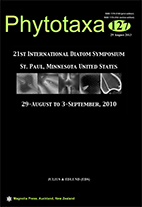Abstract
A pivotal component of hydrological restoration of the Florida Everglades is the improvement of water conveyance to Everglades National Park by the degradation of the current network of canals, roadways and levees. The Tamiami Trail (L29) road/canal complex represents a major barrier to natural water flows into the park and a variety of modification options for flow improvement are currently being explored, including the installation of spreader swales immediately downstream of culverts conveying water under Tamiami Trail from the L29 canal into Everglades National Park. In this study, we evaluated water column chemistry and wet-season diatom community structure to provide baseline information for use in future monitoring activities related to the proposed Tamiami Trail modifications. Water chemistry showed pronounced fluctuations in response to precipitation and anthropogenically mediated hydrological events. Differences in water quality variables among sites were dampened during periods of inundation, and became more pronounced during periods of low canal stage, suggesting the importance of small-scale mechanisms related to isolation of habitat patches. Diatom assemblages were unexpectedly speciose (127 taxa in 40 samples) compared to typical Everglades assemblages, and spatially heterogeneous in sites associated with concentric areas of dense vegetation immediately downstream of culverts. We also observed significant compositional dissimilarities among transects, indicating that culvert pool and north transect assemblages were substantially influenced by propagule input from the canal and areas to the north, while south transect sites were compositionally similar to typical sawgrass prairie diatom communities. Central transect sites were compositionally intermediate to their north and south counterparts. We propose that the position and spatial extent of this “transitional assemblage” is a sensitive indicator of subtle environmental change related to Tamiami Trail modifications.

